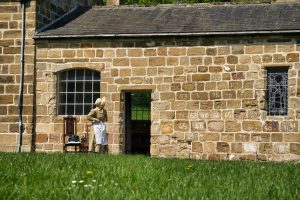Escape Rooms and Problem-Based Learning in Education
The use of escape rooms has gained popularity in recent years, offering a unique and engaging way for individuals or groups to solve puzzles and “escape” a room within a set time limit. However, what many people may not realize is that escape rooms can also serve as a valuable tool for education, specifically when combined with problem-based learning. In this article, we will explore the concept of escape rooms and how they can be integrated into the education system to promote problem-based learning.
Escape Rooms: A Brief Introduction
Escape rooms, also known as escape games, are immersive experiences where players are locked in a themed room and must solve puzzles, riddles, and challenges to find their way out within a specific time frame. These rooms often have elaborately designed props and hidden clues that require critical thinking and teamwork to solve. The concept originated in Japan in the late 2000s and has since proliferated worldwide, with many escape room businesses opening up in major cities.
Escape rooms offer a unique and exciting way to challenge individuals or groups, making them increasingly popular among both leisure seekers and businesses looking for team-building activities. However, what sets them apart from other leisure activities is their potential for educational purposes.
The Benefits of Problem-Based Learning in Education
Problem-based learning (PBL) is an instructional approach where students learn through solving real-world problems. Instead of being taught content directly, students are given a problem or challenge and must use critical thinking, collaboration, and other problem-solving strategies to find a solution. This method has been proven to be more effective than traditional lecture-based learning in fostering long-term retention of information, as well as developing important skills such as critical thinking, creativity, and teamwork.
PBL has been widely used in medical schools and other higher education institutions, but incorporating it into primary and secondary education has been met with both enthusiasm and skepticism. Despite its potential benefits, many educators struggle to find ways to implement PBL effectively into their curriculum.
Escape Rooms and PBL: A Perfect Match
The use of escape rooms in education is a relatively new concept, but it has gained traction in recent years due to its potential for promoting problem-based learning. By combining the engaging and immersive nature of escape rooms with the critical thinking and teamwork skills required in PBL, educators can create a unique learning experience for their students.
One of the primary benefits of using escape rooms for PBL is that it provides an authentic and relevant context for learning. Instead of solving abstract problems in a textbook, students are presented with a tangible and exciting challenge. This can help motivate and engage students who may struggle with traditional teaching methods.
Additionally, escape rooms allow for active and experiential learning, which encourages deeper understanding and retention of information. Instead of being passive recipients of knowledge, students become active participants in their learning, making connections and applying their skills in a real-life scenario.
How Escape Rooms Can Be Integrated into Education
While using escape rooms for educational purposes is still a relatively new concept, many examples of its successful integration can be found. For instance, a physics teacher may design an escape room where students must apply their knowledge of forces and motion to escape. Or a history teacher may create a room where students must solve puzzles related to a particular historical event or figure.
Incorporating escape rooms into the curriculum may seem daunting for some educators, but there are many resources and tools available to help. Several companies now offer educational escape room kits and materials specifically designed for classroom use. Educators can also collaborate with escape room businesses in their area to design tailored experiences for their students.
In Conclusion
Escape rooms offer a unique and effective way to promote problem-based learning in education. By combining the engaging and immersive nature of escape rooms with the critical thinking and teamwork skills required in PBL, educators can create a truly memorable and valuable learning experience for their students. As the use of escape rooms in education continues to grow, it is an exciting time for both educators and students alike.











